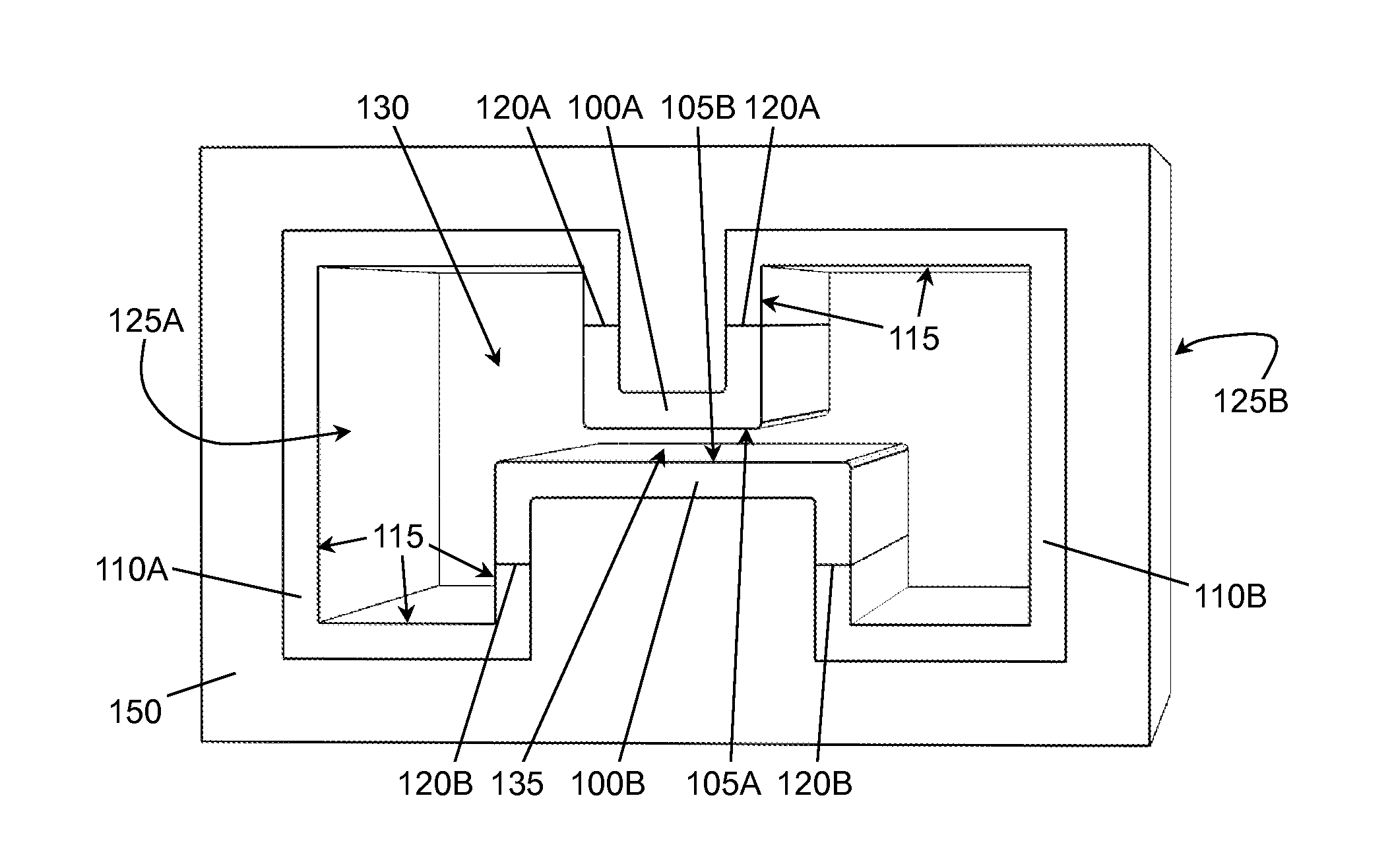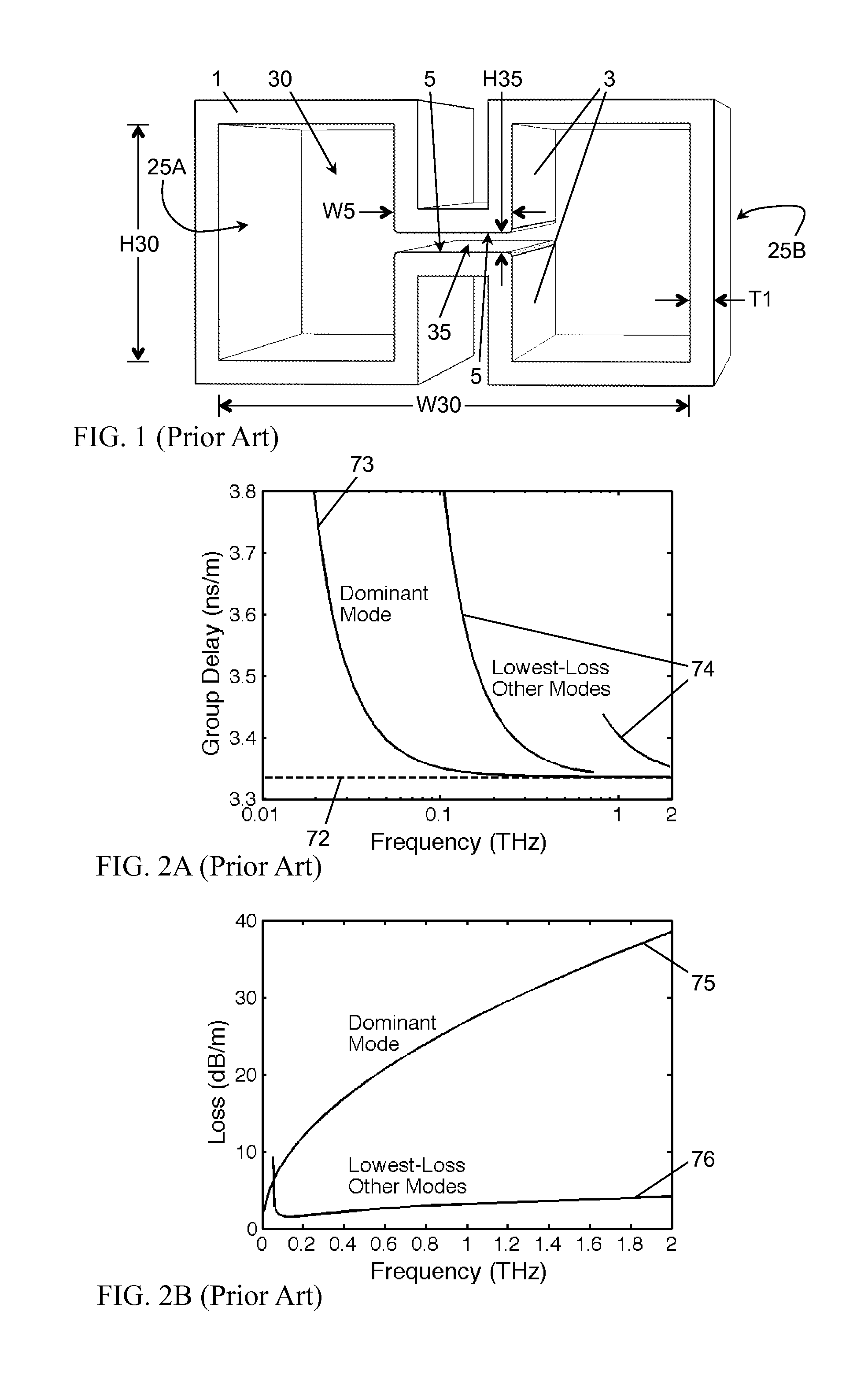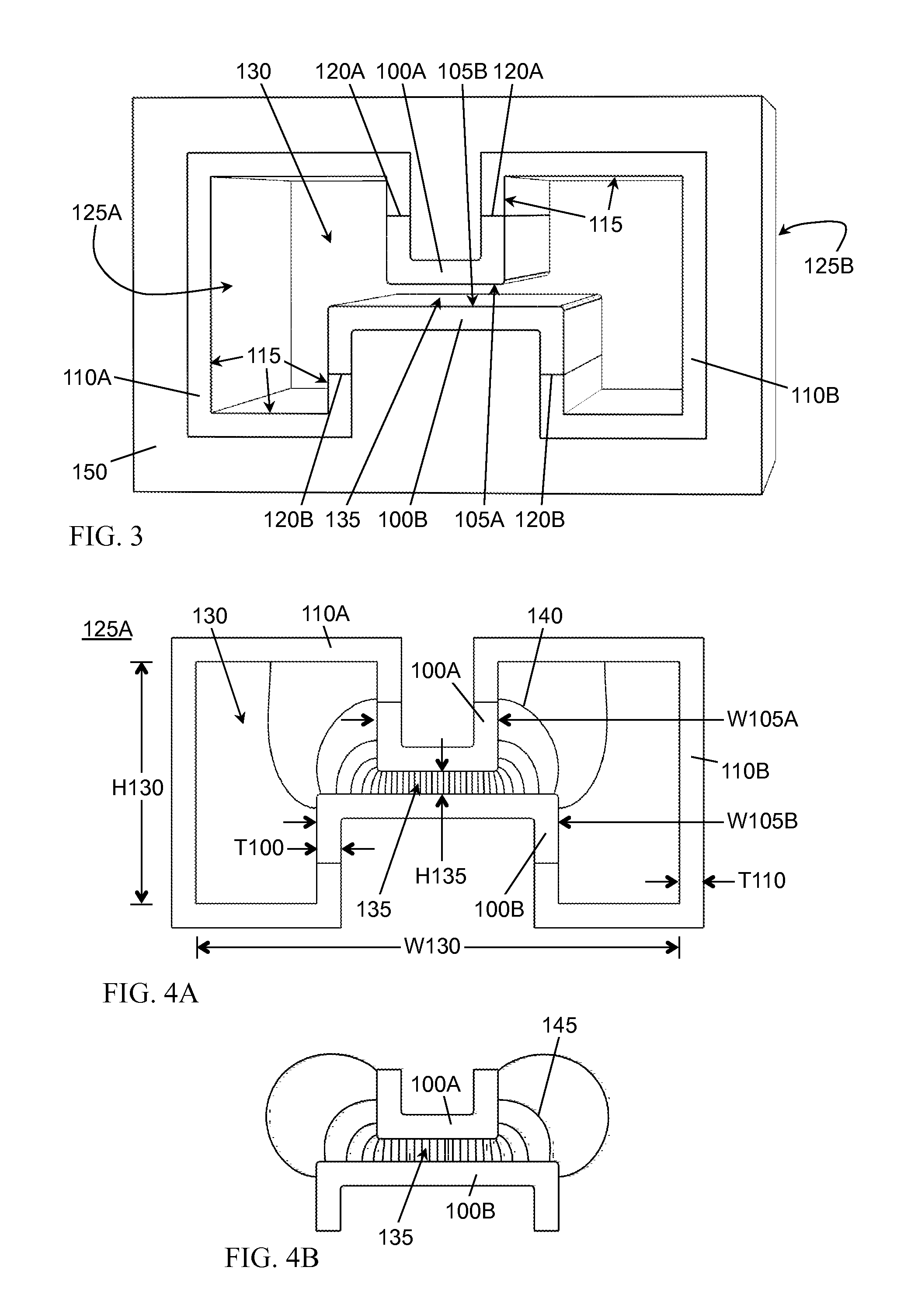Gap-Mode Waveguide
- Summary
- Abstract
- Description
- Claims
- Application Information
AI Technical Summary
Benefits of technology
Problems solved by technology
Method used
Image
Examples
embodiment examples
Gap-Mode Waveguide Embodiment Examples
[0138]According to aspects of the present invention, a gap mode propagates with lesser attenuation than do all other propagating modes substantially above the multimode cutoff. As used in this specification and the attendant claims, “multimode cutoff frequency” is defined as the lowest cutoff frequency of all non-dominant modes. As used in this specification and the attendant claims, a “multimode frequency range” is defined as a frequency range wholly above the multimode cutoff frequency.
[0139]A gap-mode waveguide is a type of conductive tubular electromagnetic waveguide. As used in this specification and the attendant claims, a “conductive tubular electromagnetic waveguide” is defined as having a wall or set of walls, an interior region within the wall or walls, and an exterior, the wall or walls being of sufficient conductivity and thickness for the purpose of guiding electromagnetic wave modes primarily within the interior region by the wall ...
example 1
FIGS. 3-9C
[0142]A gap-mode waveguide embodiment having a microstrip-like gap mode is illustrated by perspective view in FIG. 3 and by an elevation or end view in FIG. 4A. Two conductor walls, 100A and 100B, and two absorber walls, 110A and 110B, form the sides of the tubular waveguide. An interior gap 135 in the interior region 130 is formed between conductor walls proximate interior surface portions, 105A and 105B. The absorber walls, 110A and 110B, include absorber walls interior surfaces 115 that are adjacent the interior region 130. Ports, 125A and 125B, bound the ends of the waveguide. The conductor walls proximate interior surface portions, 105A and 105B, have generally parallel interior surfaces bordering the interior gap 135 as necessary for the propagation characteristics to remain within specified tolerances. The upper conductor wall gap-facing width W105A is narrower than the lower conductor wall gap-facing width W105B. The corners of the conductor walls, 100A and 100B, t...
example 2
FIGS. 10-11B
[0199]This example provides for a change in propagation direction by bending or curving of a gap-mode waveguide, as illustrated in FIG. 10. A gap-mode electric-field-plane or E-plane bend 161 provides for a relatively low-loss change of the gap-mode propagation direction. As used in this specification and the attendant claims, the gap-mode electric-field plane is defined by the principal electric-field polarization and the propagation direction at a specified location, such as at a port or beginning of a bend, as in the present example. As used in this specification and the attendant claims, the principal electric-field polarization is defined as the polarization that best characterizes the overall gap-mode electric field. The principal electric-field polarization is generally the gap-mode electric field polarization at the center of the interior gap for gap-mode cross-sections having bilateral symmetry, as in the present example, or substantial bilateral symmetry.
[0200]...
PUM
 Login to View More
Login to View More Abstract
Description
Claims
Application Information
 Login to View More
Login to View More - R&D
- Intellectual Property
- Life Sciences
- Materials
- Tech Scout
- Unparalleled Data Quality
- Higher Quality Content
- 60% Fewer Hallucinations
Browse by: Latest US Patents, China's latest patents, Technical Efficacy Thesaurus, Application Domain, Technology Topic, Popular Technical Reports.
© 2025 PatSnap. All rights reserved.Legal|Privacy policy|Modern Slavery Act Transparency Statement|Sitemap|About US| Contact US: help@patsnap.com



